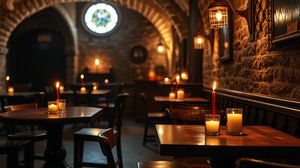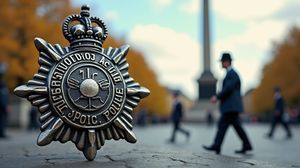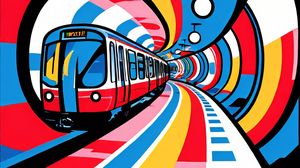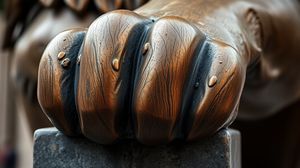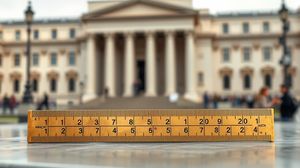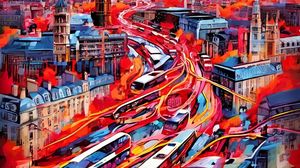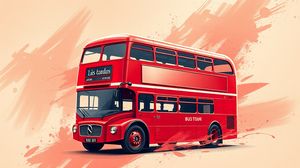
The iconic red double-decker bus is one of London's most recognisable symbols, embodying both the city's history and its forward-looking energy. These buses have been rolling through London's streets since the 1920s, when they were first introduced as a solution to the city's growing transportation needs. Their bright red colour, chosen to ensure visibility, has become an international emblem of London.
The classic Routemaster, introduced in the 1950s, is the most famous of London's double-deckers. With its distinctive open platform at the back, this bus allowed passengers to hop on and off with ease. Designed with a lightweight aluminium body and built-in reliability, the Routemaster was both practical and elegant, quickly becoming beloved by Londoners. Although retired from regular routes in 2005, some Routemasters still run on selected heritage routes, keeping a piece of London's history alive.
Today, the red double-decker fleet has evolved with modern, environmentally friendly models. Many of the new buses are hybrids, designed to reduce emissions and offer a quieter ride, while retaining the characteristic double-decker structure. The latest designs feature all-door boarding and digital screens, blending technology with tradition to meet the demands of a busy, modern city.
Beyond being a mode of transport, London's red double-decker buses have become part of the city's cultural fabric. They frequently appear in films, art, and literature, often depicted as a romantic and iconic part of the London experience. Visitors riding these buses not only get a unique view of the city's landmarks from the upper deck but also a chance to immerse themselves in a quintessentially London experience.
For both locals and tourists, these buses represent more than just a way to get around. They are a moving part of London's history, carrying millions of people each day and embodying the city's spirit of resilience, progress, and charm. Whether a classic Routemaster or a state-of-the-art hybrid, the red double-decker bus remains an essential and much-loved part of London life.

Making the Most of Your Visit:
If you're looking for a scenic route, hop on the number 11 bus. It takes you past some truly iconic London landmarks like Westminster Abbey, Buckingham Palace, and St. Paul's Cathedral. It's like a budget-friendly tour of the city's greatest hits, all from the comfort of an upper-deck seat!
Want to feel like a local? Avoid traveling during rush hour in the mornings (roughly 7-9 AM) and late afternoon (around 5-7 PM). The buses can get quite packed with commuters, and you might not get that coveted seat on the upper deck. Late morning is usually a sweet spot for a leisurely ride.
Try to sit at the front of the upper deck if you can. Not only do you get panoramic views, but it's also a great vantage point for those perfect photos through the wide front windows. Just aim for the seat early as it's often the most popular choice!
Remember to tap on with your contactless payment card or an Oyster card when you get on the bus. London buses no longer accept cash, so make sure you're prepared before you board. If you're planning multiple bus journeys, consider a one-day travel card as it might save you some money.
If you're interested in more of a historical experience, try catching one of the heritage Routemaster buses. They run on Routes 9 and 15 and offer a nostalgic ride through the city. You can hop on and off just like in the old days. They run from central touristy areas, so it's easy to catch one during your sightseeing.

Visiting Times & Costs:
The red double-decker buses are a widespread mode of public transport in London, available to locals and tourists alike.
Open to the Public: Yes, the red double-decker buses are operational and open to anyone with a valid ticket or payment method.
Operating Hours: The buses generally run from early morning around 5:00 AM until late at night, approximately 12:30 AM, depending on the specific route and day of the week.
Cost: Travel on the red double-decker buses is not free. Passengers are required to use a contactless payment card, Oyster card, or travel card. A single bus journey within London costs £1.75, and there is a daily cap if multiple journeys are made. Check Transport for London's fare tariffs for the latest pricing details.
Accessibility: Most of London's modern red double-decker buses are accessible to those with mobility impairments. They typically feature designated spaces for wheelchairs, entry ramps, and priority seating. However, some heritage Routemaster buses may have limited accessibility features due to their historic design.

Address & Map:

Nearby:



